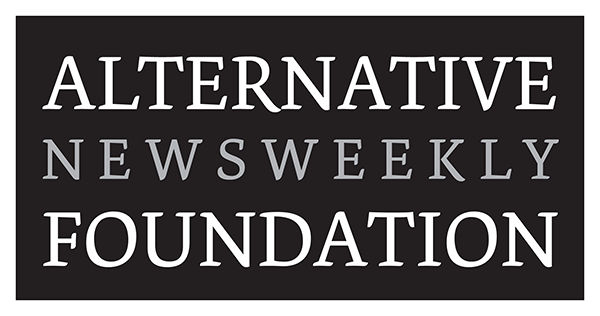Asking for donations can feel daunting, but when approached thoughtfully, it becomes an opportunity to create a meaningful connection with potential donors. To ensure your fundraising efforts are both impactful and respectful, it’s important to take a step back and think like a donor. Understanding their motivations, values, and concerns can help you craft compelling messaging that resonates on a deeper level.
Following are eight ways to make your donation request more relationship-driven, donor centric and successful – and your donors feel less like an ATM.
1. Understand What Motivates Your Donors
Individuals will donate to your publication because it aligns with their values, beyond paying for a quid pro quo subscription. As you craft your donation ask, put yourself in their shoes and consider what drives and inspires them about your publication. It could be a personal connection, desire to make an immediate impact or support long-term change.
Consider –
- Why would an individual choose to support your publication?
- What kind of impact are they seeking for their donation to make?
- How might your publication’s mission align with their personal values or experiences?
By approaching your ask with a clear understanding of what motivates your audience, you’ll be able to speak to their passions and tap into the emotional and intellectual reasons they give.
2. Build Trust Through Transparency
Donors want to feel confident that their contributions will be used effectively. They’re more likely to give when they trust that your organization is transparent about its operations, finances, and impact. If you’re not already sharing this information openly, consider creating and implementing a policy.
The following questions are likely top of mind for prospective donors:
- How will my donation be used?
- What specific outcomes can I expect from my gift?
- Is the publication transparent about their goals, progress, and challenges?
Providing clear, upfront answers to these types of questions builds trust and empowers donors to feel more emotionally invested and connected to your publication – like a partner. Transparency shows that you value your supporters and are committed to using their donations wisely.
3. Highlight the Tangible Impact
Donors want to see the real-world results of their generosity. When asking for donations, make sure you can clearly explain the specific impact their gift will have, focusing on tangible outcomes.
For example:
- Your $50 gift ensures we can print 50 copies of our monthly paper.
- A $100 donation covers printing and distribution to 10 high schools across the state.
- Your $500 donation will fund printing and distribution to 50 high schools statewide.
By outlining the specific impact of different donation levels, you give donors a clear picture of how their contribution will create change. This approach makes your request more compelling and helps donors feel empowered, knowing exactly where their money is going.
4. Make It Personal
Think about how a donor experiences your publication. While your organization may have a readership of hundreds or thousands of people, every donor is an individual with personal reasons for giving. Instead of focusing only on broad goals, tell personal stories that can resonate on an emotional level.
Consider how you can:
- Share stories of individuals who have been helped by your publication’s investigative journalism.
- Allow donors to connect with real people whose lives have been impacted by free, print papers at their local school and university – the faces behind the statistics.
- Highlight stories that only happened because your publication hired new reporters.
When you make your ask personal, you invite donors into the story and help them see how it’s more than just giving to a cause—they’re directly impacting people’s lives.
5. Consider Giving Capacity
Potential donors appreciate being asked for a gift that feels reasonable and appropriate for them, and having several donation levels to choose from.
From the donor’s perspective, they’re likely asking themselves:
- Can I afford this contribution without financial strain?
- Will my donation make a meaningful difference, regardless of the amount?
- Are there other ways to support this cause if I can’t give financially?
By providing multiple gift levels and explaining the impact of each, you give donors the flexibility to contribute according to their means. Additionally, it’s important to recognize and appreciate all contributions regardless of size, emphasize that every gift counts, and offer small donations and a monthly recurring option.
6. Communicate Value, Not Just Need
While it’s important to explain the need for donations, focusing solely on urgency or scarcity can feel off-putting to potential donors. Instead of framing your donation request around what the organization lacks, frame it around the value their gift will bring to the community.
For example, instead of saying:
- “Advertising is almost non-existent and we are in desperate need of funds.”
Try framing it like this:
- “Your donation will help us continue our tradition of providing you, our community, with the investigative journalism, reporting and information you deserve and expect.”
By focusing on the positive outcomes of a donation, you’re inviting the donor to participate in creating value and change, rather than responding to a crisis and thus making the giving experience empowering.
7. Respect Their Time and Attention
Donors, like everyone, are busy. When making an ask, be mindful of their time and attention by keeping your message clear, concise, and to the point. Overwhelming potential donors with too much information or long-winded appeals can dilute the impact of your request.
Think like a donor and ask yourself:
- Are the story and ask clear and easy to understand?
- Does it get to the heart of why their support matters?
- Have I provided the necessary details without overwhelming them?
A straightforward and respectful donation request is more likely to be well-received and appreciated by the donor.
8. Show Gratitude and Keep the Connection Alive
After a donor has made a contribution, the relationship is really just beginning. One of the most important aspects of thinking like a donor is considering how they feel after they give.
Be sure to:
- Thank them sincerely and promptly for their donation, ideally beyond the auto-generated tax receipt.
- Keep them updated on the impact of their contribution with stories and results.
- Invite them to stay involved in your publication’s work, whether through volunteer opportunities, events, or future giving.
Donors want to know that their contribution is valued and that they’re a part of the ongoing mission. Maintaining a genuine relationship post-donation shows that you see them as partners in your work—not just a source of funds.It’s easier and less expensive to keep a donor then find a new one – cultivate each donor relationship.
To close, when donors are put first, your publication shifts from simply raising money to creating meaningful, trust-based relationships. By understanding their motivations, communicating transparently, and focusing on the real impact of their gifts, you create an experience that leaves donors feeling valued, informed, and inspired to give. And when donors feel that connection, they’re not just likely to give—they’re likely to become long-term supporters, partners and advocates for your publication.




